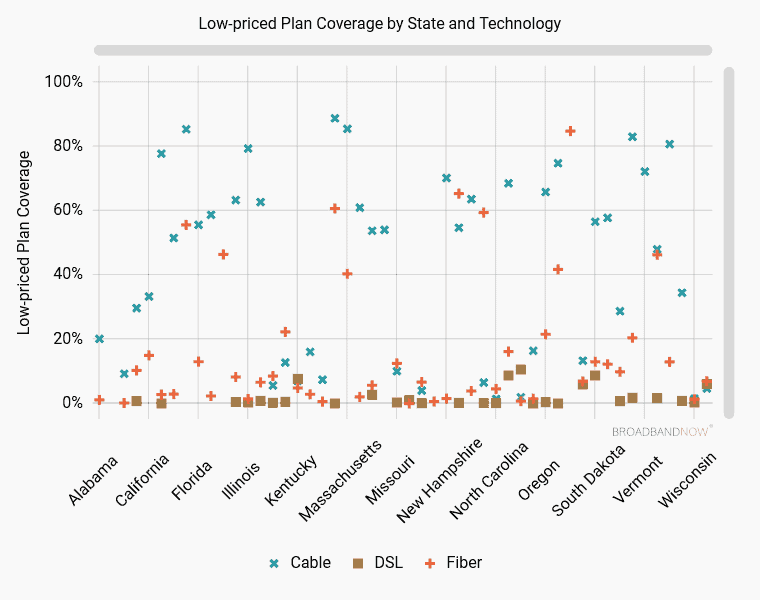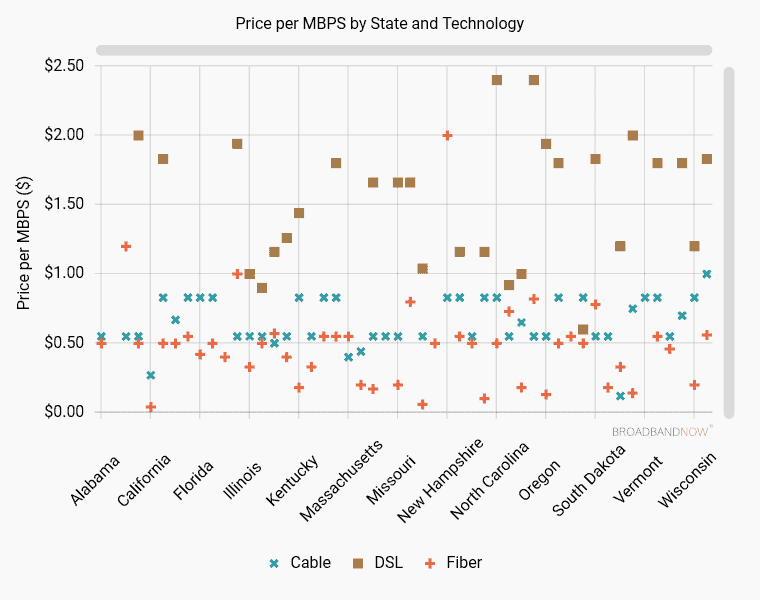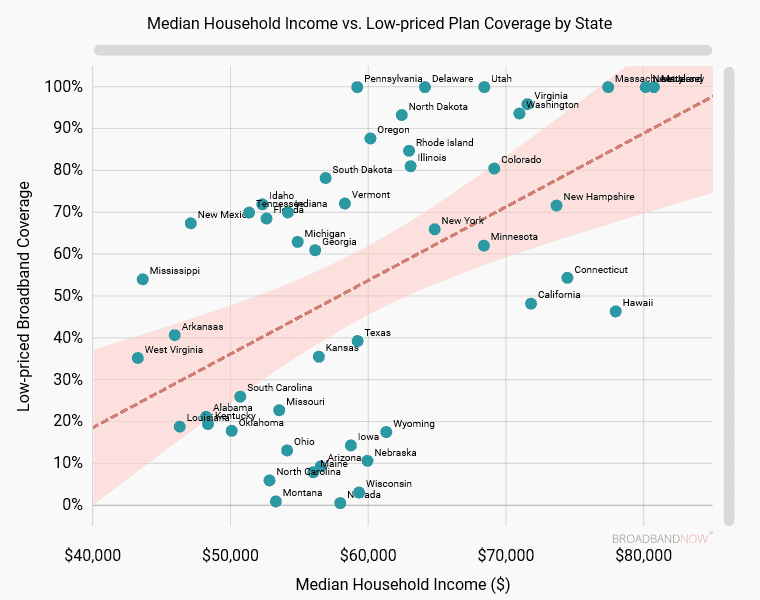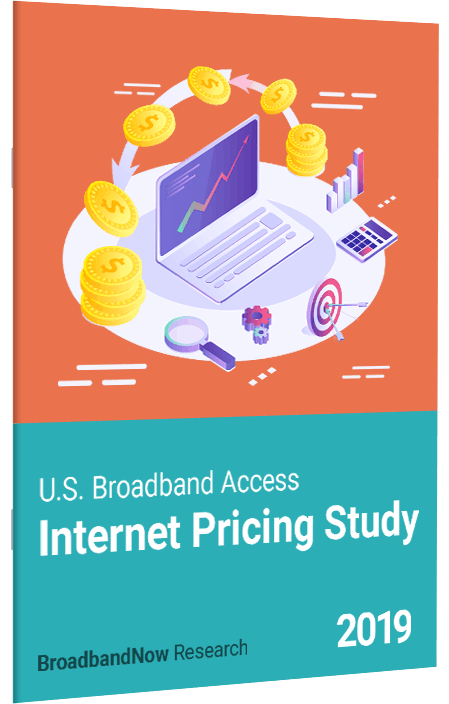Rural communities have less access to wired broadband internet. Even when an option is available, prices are higher. Based on data from over 2,000 internet service providers, the interactive visualizations below show that rural areas pay higher prices. In addition, states with lower median incomes have less access to low-priced broadband internet. Read more about our data set.
Notable Findings:
- Roughly 146 million people in the U.S. (about 45 percent of the population, or equivalent to the entire population of Russia) do not have access to a low-priced plan for residential wired broadband.
- Zip codes in the bottom 10 percent of population density pay up to 37 percent more on average for residential wired broadband than those in the top 10 percent.
- Across the 50 states, fiber has the lowest average price per Megabits per second (Mbps) ($0.48), followed by cable ($0.65) and DSL ($1.53).
- States with median household income of at least $60K have 78 percent low-priced plan coverage on average, compared to only 37 percent for states with less than $60K income.

The graph above shows low-priced plan coverage broken out by technology. If a state had no low-priced plan coverage for a given technology, the point was not included in the graph. Alaska is the only state with zero percent access to a low-priced plan for any technology. The technology with the highest low-priced plan coverage is cable with average coverage of roughly 43 percent across all states, followed by fiber with 17 percent, and DSL with two percent average coverage across all 50 states.

The graph above shows lowest price per Mbps by state and technology. The price per Mbps is lowest for fiber, with an average of $0.48 per Mbps across all 50 states. Cable has the next lowest price per Mbps with an average of $0.77, and DSL has the highest average price per Mbps at $1.53.

The graph above shows the relationship between median household income and low-priced wired broadband coverage. The red dotted line and red shaded curve represent the regression line and confidence interval. There is a slight positive relationship between income and low-priced broadband coverage—states with higher median household income generally have better access to low-priced plans. States with median household income of at least $60K have 78 percent low-priced plan coverage on average (compared to only 37 percent average coverage for states with less than $60K income). Twenty states have less than 45 percent low-priced plan coverage, and median household income for these states ranges from $43K to $62K.
| Decile | Max Population Density | Mean Lowest Price | Median Lowest Price |
|---|---|---|---|
| 1 | 147,807 | $50.07 | $49.99 |
| 2 | 3,713.81 | $51.78 | $49.99 |
| 3 | 1,658.13 | $53.56 | $49.99 |
| 4 | 649.62 | $54.38 | $49.99 |
| 5 | 274.90 | $56.44 | $50.00 |
| 6 | 129.81 | $58.14 | $59.95 |
| 7 | 74.09 | $59.06 | $60.00 |
| 8 | 44.41 | $60.26 | $63.99 |
| 9 | 24.70 | $61.53 | $60.95 |
| 10 | 9.22 | $68.69 | $64.95 |
The chart above shows the relationship between broadband price and population density per square mile by zip code. For each zip code, price is represented by the lowest price offered by any provider for wired residential broadband (at least 25Mbps download and 3Mbps upload speeds). The chart breaks down the zip codes into deciles by population density and shows mean and median lowest price for each decile. Zip codes with higher population density generally pay lower prices on average for broadband internet.
About our Data
We defined broadband internet as a residential provider plan with at least 25Mbps download and 3Mbps upload speeds. Low-priced plans are defined as plans with prices less than or equal to the 20th percentile of all qualifying broadband plan prices within a given technology (such as fiber, DSL, or cable). We used publicly available plan data from more than 2,000 internet service providers from October 2018 to December 2018. We had to make some assumptions about provider coverage when no single provider covered 100 percent of a zip code. If Provider A covered 10 percent and Provider B covered 15 percent of a zip code, we assumed for the purpose of these charts that the zip code had 25 percent coverage.
Are you a journalist or researcher writing about this topic?
Contact us and we'll connect you with a broadband market expert on our team who can provide insights and data to support your work.

